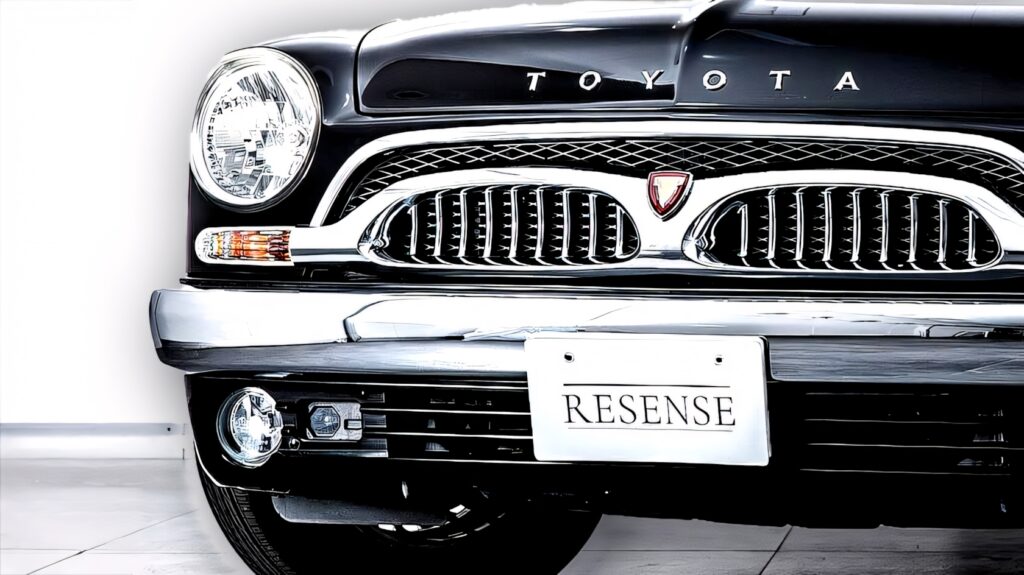
- Toyota built the Origin to mark the production of its 100 millionth car.
- The design draws inspiration from the 1955 Toyopet Crown sedan.
- Beneath the retro bodywork sits a 3.0-liter 2JZ six-cylinder engine.
We all love a classic Toyota, but what if we told you that, in the early 2000s, the automaker released a special sedan that flew under the radar outside of Japan? That sedan is the Toyota Origin, a rare model with fewer than 1,100 units produced during its 12-month production run. Now, as the Origin celebrates its 25th anniversary, it might not be long before we start spotting a few of these elusive cars on US roads.
var adpushup = window.adpushup = window.adpushup || {que:[]};
adpushup.que.push(function() {
if (adpushup.config.platform !== “DESKTOP”){
adpushup.triggerAd(“0f7e3106-c4d6-4db4-8135-c508879a76f8”);
} else {
adpushup.triggerAd(“82503191-e1d1-435a-874f-9c78a2a54a2f”);
}
});
A Throwback to Toyota’s Origins
Produced between May 2000 and April 2001, the Origin might initially make you think you’ve stepped into a time machine. The design feels like something straight out of the 1950s or 1960s, and there’s a reason for that. When Toyota set out to build the Origin, they took heavy inspiration from the first-generation Crown, which debuted in 1955 as the Toyopet Crown sedan.
Read: Toyota’s New JDM Crown Estate Gets A Pull-Out Deck Chair And 302 HP
Now, you might be wondering, “Is that a typo? Is it really Toyopet?” No mistake here. The story goes that Toyota held a public naming competition in Japan for its first passenger car, and Toyopet came out on top.
Photos Toyota UK
The Toyopet Crown was a pivotal car in Toyota’s history and, by extension, Japan’s. It was not only Toyota’s first full-scale passenger car but also the first Japanese vehicle to be exported and sold in the mainland United States. However, the car didn’t quite win over American buyers. Between its underwhelming performance and hefty price tag of $1,999, which accounted for 67 percent of the average American’s annual wage in 1958, the Toyopet flopped hard.
If you’re trying to do the math (we definitely were), here’s the breakdown: that $1,999 from 1958 is roughly $22,468 today, according to the US Bureau of Labor Statistics. Interestingly, that’s almost the exact price of Toyota’s most affordable model in the U.S. right now, the Corolla sedan, which starts at $22,325.
The Toyopet’s failure also led to the demise of its name in Western markets. As Toyota later explained, “To English-speaking ears, the Toyopet brand name was divisive, as it contained the words ‘toy’ and ‘pet’, both of which many felt had unsuitable connotations for a serious vehicle in a discerning market.”
var adpushup = window.adpushup = window.adpushup || {que:[]};
adpushup.que.push(function() {
if (adpushup.config.platform !== “DESKTOP”){
adpushup.triggerAd(“bb7964e9-07de-4b06-a83e-ead35079d53c”);
} else {
adpushup.triggerAd(“9b1169d9-7a89-4971-a77f-1397f7588751”);
}
});
Toyota quickly pulled it from the US market and shifted focus to the more successful Land Cruiser. Nonetheless, the Toyopet remains a sentimental part of Toyota’s history, which brings us to the Origin, a tribute to that significant first car.
The Toyota Origin: A Modern Classic
Toyota originally made the Origin to commemorate the 100 millionth vehicle it had built. The automaker did an impressive job of replicating the original Crown’s design 45 years later, though the Origin is noticeably larger, giving it a more modern feel without losing the vintage charm.
The front of the Origin is a sight to behold. It has simple round headlights and an intricate chrome-finished grille that makes the sedan seem much older than it actually is. The 1950s influence is particularly evident when viewing the Origin from the side. The front half is relatively standard for a three-box sedan, but the rest is quite unusual.
var adpushup = window.adpushup = window.adpushup || {que:[]};
adpushup.que.push(function() {
if (adpushup.config.platform !== “DESKTOP”){
adpushup.triggerAd(“b25ecba7-3bbb-4ea7-a3a8-dbea91695c07”);
} else {
adpushup.triggerAd(“e46c436a-adeb-4b5e-a2c7-56bc36561c10”);
}
});

The rear end is where things get really interesting. The Origin features thick, curved C-pillars that blend into the roof, and the rear window has an unusual shape that adds to the unique look. The back doors? Oh, those are suicide doors, just like on the original, something you definitely don’t see every day on a modern sedan.
In terms of dimensions, the Origin stretches to 4,560 mm (179.5 in) in length, 1,745 mm (68.7 in) in width, and stands 1,455 mm (57.3 in) tall, with a wheelbase of 2,780 mm (109.4 in). It tips the scales at 1,560 kg (3,439 lb).
Underneath it all, the Origin shares its chassis with the Lexus IS of the time, powered by a 3.0-liter 2JE straight-six engine paired with a four-speed automatic transmission driving the rear wheels.

As for the interior, it’s a bit of a letdown. While the cabin features premium leather and real wood trim, it’s exactly what you’d expect from a mid-luxury Toyota of the early 2000s, nothing particularly memorable. In fact, you could easily mistake it for a 2000 Lexus ES.
Production was initially capped at 1,000 examples, though it’s understood that 1,073 were actually built.
Davey Japan
John Halas contributed to this story.